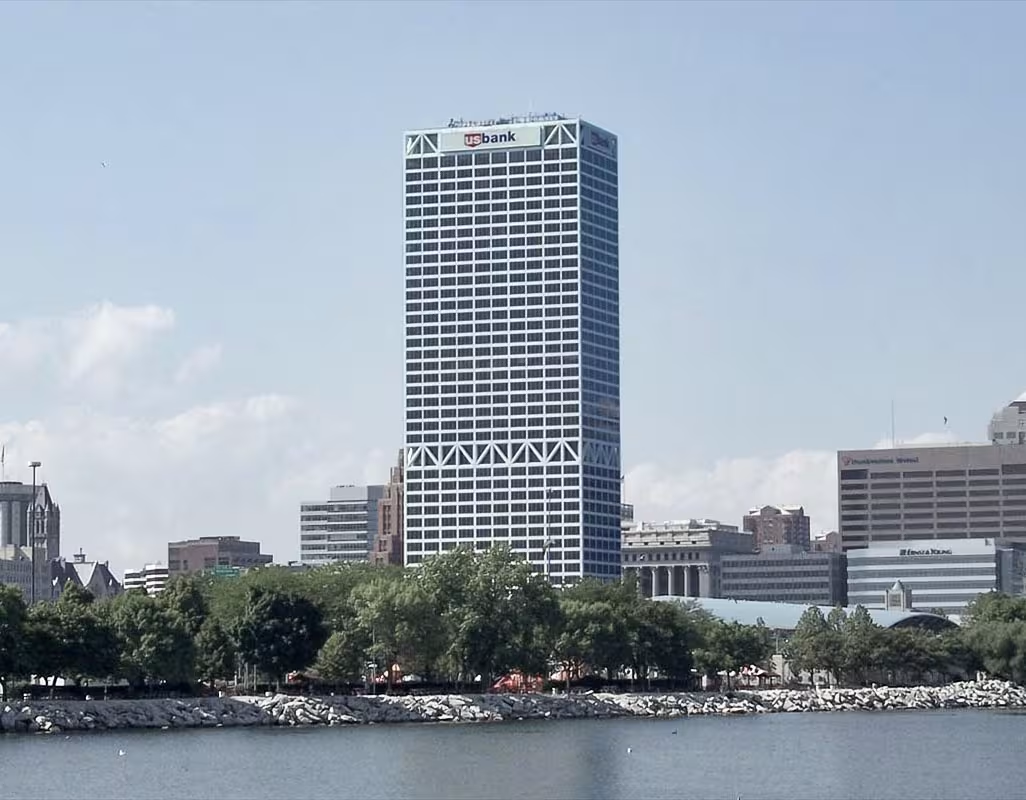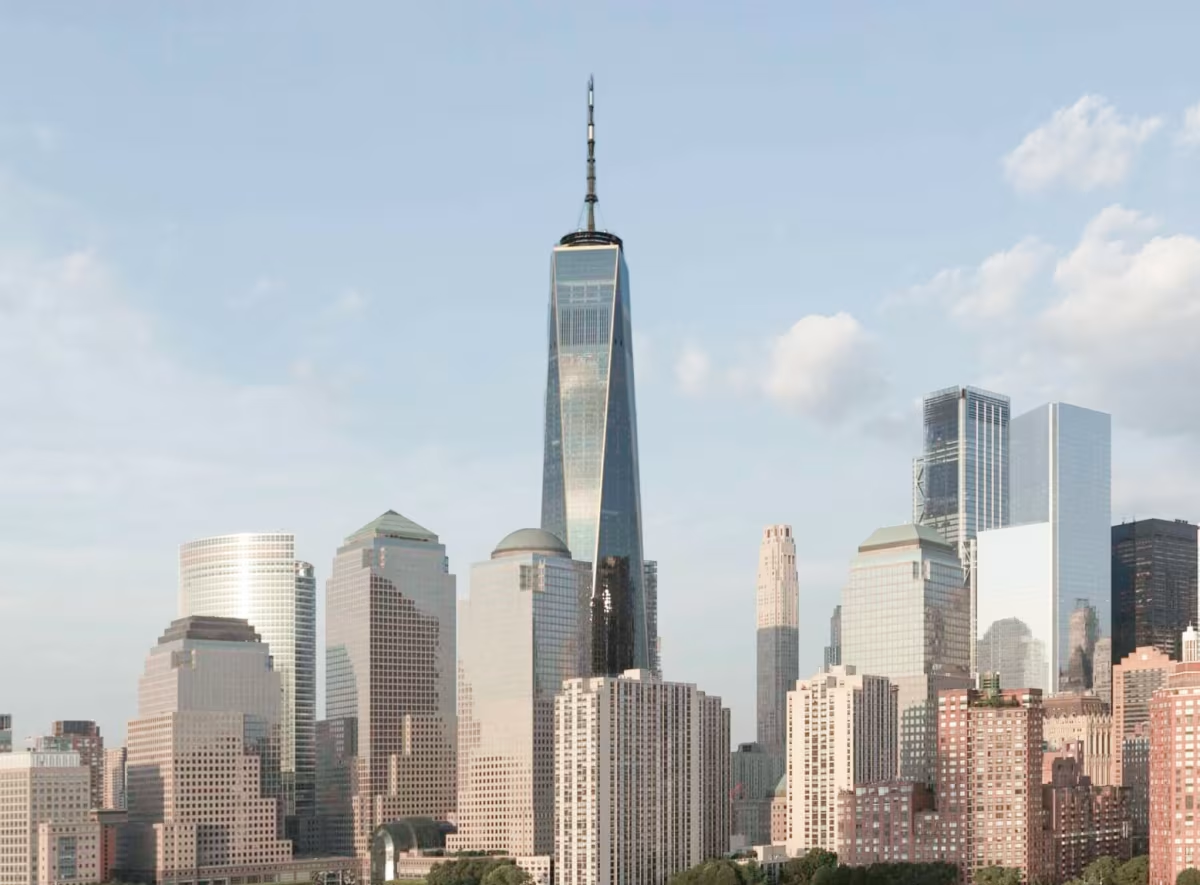U.S. Bank Center vs One World Trade Center


Comparing the U.S. Bank Center and the One World Trade Center is compelling because they were both designed by Skidmore, Owings & Merrill, yet they stand in different cities (Milwaukee, WI and New York, NY), and were completed over two decades apart.
What this will allow us to see, is how the same firm's approach adapted to different places in different periods of time.
Height & Size
The One World Trade Center is clearly the larger tower of the two, both in terms of height and number of floors. It rises to 1775ft (541m) with 104 floors above ground, while the U.S. Bank Center reaches 600ft (183m) with 42 floors above ground.
One World Trade Center also offers more total built-up area, a total fo 3,500,000 sqf (325,161m2), which is about 2,422,394 sqf (225,048m2) more than what the U.S. Bank Center offers.
Of course, each project may have faced different briefs or regulatory constraints, which we don't really know about and could also explain the outcome.
Architectural Style
The U.S. Bank Center was designed in the International Style style, while the One World Trade Center reflects the principles of Contemporary.
The U.S. Bank Center represents a late expression of the International Style, a style already in decline in 1973 when it was completed. By contrast, the One World Trade Center followed the then mainstream Contemporary, embodying the dominant architectural direction of its time.
With 41 years between them, the comparison also reflects how quickly architectural priorities can shift from one dominant language to another.
Uses
Both the U.S. Bank Center and the One World Trade Center were designed to serve as commercial towers, and that has remained their main use since their completion, serving similar roles in the urban fabric.
The U.S. Bank Center also provides 980 parking spaces.
Structure & Facade
The two towers rely on different structural systems, reflecting distinct engineering strategies.
The U.S. Bank Center uses a Trussed Tube structural system, which , while the One World Trade Center uses a Framed Tube In Tube system, that combines a strong central core with a perimeter tube of columns.
Yet, when it comes to their facade, they both employed the same solution, a Curtain Wall facade.
A curtain wall is a non-load-bearing facade hung from the structural frame. It is anchored to floor slabs and transfers only its own weight and wind loads, allowing for sleek, glassy exteriors.
| U.S. Bank Center | One World Trade Center | |
|---|---|---|
| Skidmore, Owings & Merrill | Architect | Skidmore, Owings & Merrill |
| 1969 | Design Started | 2005 |
| 1971 | Design Ended | 2007 |
| 1971 | Construction Started | 2006 |
| 1973 | Year Completed | 2014 |
| International Style | Architectural Style | Contemporary |
| Commercial | Current Use | Commercial |
| 42 | Floors Above Ground | 104 |
| 183 m | Height (m) | 541 m |
| 100113 | Built-up Area (m²) | 325161 |
| 20 | Number of Elevators | 73 |
| Trussed Tube | Structure Type | Framed Tube In Tube |
| Steel | Vertical Structure Material | Steel |
| Concrete And Steel | Horizontal Structure Material | Poured Concrete Over Metal Decking |
| Yes | Facade Structural? | No |
| Glass, Steel | Main Facade Material | Glass, Steel |
| Morse Diesel International | Main Contractor | Tishman Construction |
| Fazlur Rahman Khan | Structural Engineer | WSP Group |
| WI | State | NY |
| Milwaukee | City | New York |
| 777 East Wisconsin Avenue | Address | 285 Fulton Street |